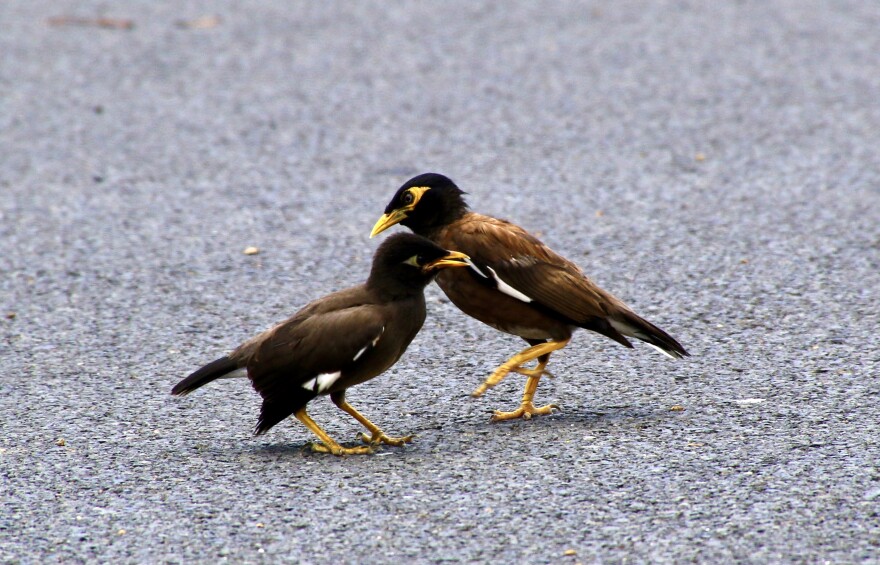Myna birds are very good at what they do, and that's being a pest. Whether introduced accidentally or purposefully, the common myna quickly colonizes new landscapes, terrorizing other birds, spreading disease and invasive seeds, and damaging fruit crops in the process.
The origin story of mynas in Hawai'i is yet another example of early and misguided bio-control efforts. They were brought to O'ahu from India in the 19th century in order to control cutworms and other insects in agricultural fields. At first, this strategy paid off, but then the mynas set their sights on the shores of the neighbor islands. Within a few decades, they were everywhere.
Fortunately, our native forests don't appear to appeal to common myna birds. These city-slickers prefer to forage in urban settings, and their high-pitched chatter is near-constant tune in our daily lives. See if you recognize it with today's Manu Minute!
Audio credit: Peter Boesman/Macaulay Library at the Cornell Lab of Ornithology (ML284474)






